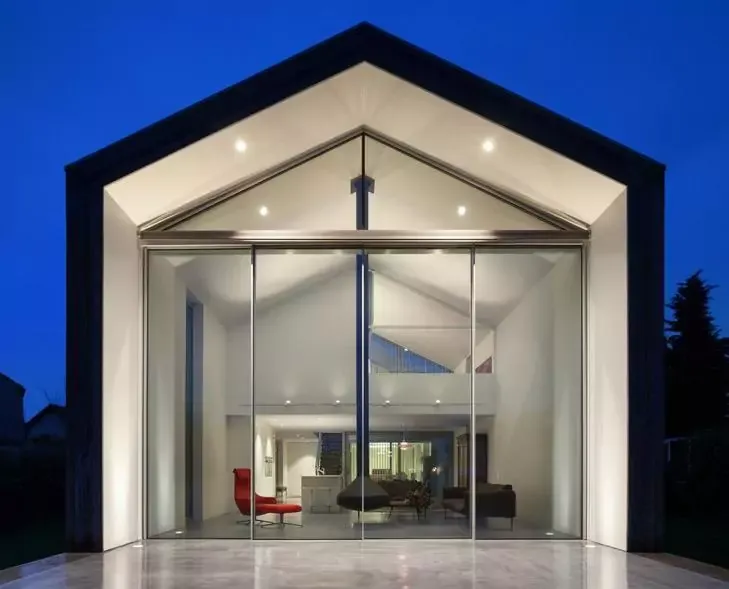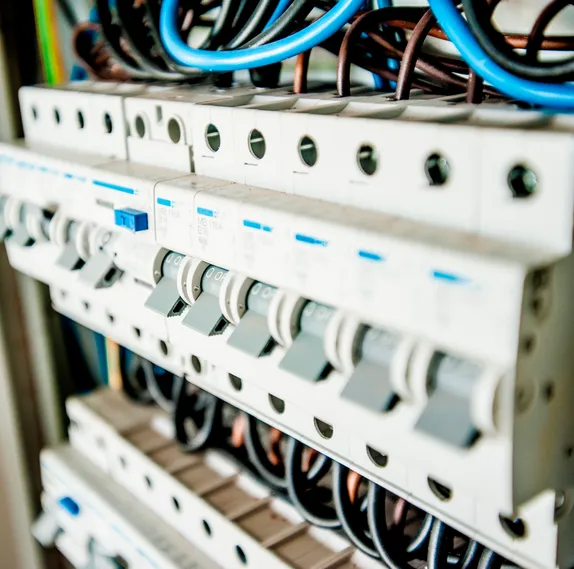
Introduction
KNX is the leading automation and lighting control brand in Europe. Founded in the year 1999 by the following groups of associations BCI (BatiBUS Club International), EIBA (European Installation Bus Association), and EHSA (European Home Systems Association). KNX stands for “Konnex” It’s a German word that English translation is Connection or Connectivity. KNX automation and lighting controls make sure that end users can get the most flexible and customized smart home solution. Which includes Managing lighting, temperature, Security, and more from a single interface.
By integrating KNX automation and lighting control, end-users and businesses can enhance comfort, security, and energy efficiency in their properties.
Why KNX Home Automation and Lighting Control?

KNX offers and makes sure end-users can get cohesive and flexible automation solutions as per globally recognized standards. It can integrate devices and systems from multiple brands ensuring seamless communication and control, as well as its support for wired and wireless communication provides flexibility in installation automation engineers.
KNX is a globally recognized and reliable Automation and Lighting Control system manufacturer that offers a very high level of customization and reliability. If you’re looking for a future-proof automation system that can grow with your needs, KNX is a good option to consider.
Key Features of KNX
KNX offers smart integration with stable and dependable performance. also Optimize energy use for sustainability and cost savings. Let’s check some key features of KNX.

Lighting Control
Efficient light control assures that your lights are off when you go to bed. Dim your light easily with your smartphone or tablet from any place in the world. Movement sensors will switch on the light when you enter a room. No waste of electricity. Create light scenes and change the scene according to your mood with a single touch. This flexibility KNX offers to luxury homes.

Blinds Control
Open or close shades or sun protection screens with only a single click from your smartphone or touchpad. Adjust settings according to the weather and save energy by closing your blinds on a hot summer day. Close your screens remotely to protect your home against heavy winds and storms. Slowly awake in the morning with the rising sun. This conforms to KNX Blinds or Shades control provided.

Heating, Ventilation & Air-conditioning Control
Manage the temperature in the room according to the time of day or the function of the room. Take a shower in the morning in a preheated bathroom, lower your temperature during the day, and get welcomed by a comfortable home. Heating that is automatically deactivated when you are not at home will save you considerable energy costs. Control your air-conditioning or ventilation system remotely for a refreshing homecoming during a high temperature. Smart climate control creates a comfortable and energy-efficient home.

Door communication or Intercom
You can see visitors at your doorstep before opening with a door entry system or intercom. When the doorbell rings you can check your visitors’ picture on the entry system. When you are not at home check on your smartphone or tablet. Personalize the welcome message when opening the door for your visitors for a warm welcome.

Home Security
Smart home automation allows you to activate automatically your alarm when you lock the door. Movement sensors will detect suspicious movements at your door system will inform you or the local police. Create smart security alerts to keep intruders out of your property. Manage the alarm system remotely and set up a routine to give the impression that you are at home when you are not.

Scalability and Flexibility
KNX has been a worldwide standard with a strong international community for over 30 years. Offers a reliable and stable technology that is ready for the future. They are the international solution for high-quality smart home automation and lighting controls. Along with the KNX System end-users can upgrade their automation system at any time with complete customization.
KNX Compatible Devices and Systems
KNX is not an individual system, it’s a command language like a commander of your smart home devices. KNX is compatible with multiple devices from many different product manufacturers like lights, white goods, security systems, and more, can all talk to each other as long as they’re KNX-compatible. This gives you incredible flexibility to choose exactly the components you want for your home automation while ensuring everything works together seamlessly. The downside is that KNX systems can be more complex to set up and require a qualified installer.
KNX Consultancy and Installation Process

KNX offers flexible home automation solutions, which require expert automation consultation and a KNX-certified engineer. They understand clients’ specific needs and expectations for your smart home system. The automation consultant will design the system layout, specifying device types, locations, and wiring plans. Alter approval of plane KNX-certified technicians will carefully install the KNX bus cable, power supply, sensors, and other devices throughout the home, ensuring proper placement as per global safety regulations.
Once all hardware is installed help of specialized software the automation engineer will program each device and define communication logic. This essentially translates client-desired automation scenarios into instructions for the devices to understand. Once all configurations are done, the system undergoes rigorous testing to ensure all devices function properly and communicate. This involves testing individual components, group interactions, and overall system performance.
The Importance of Professional Home Automation and Lighting Control Installation

Home Automation and Lighting Control is a very complexified system. That’s why KNX installations are highly recommended to be handled by certified automation engineers only. KNX systems are integrated with many electrical wirings, so proper installation is very important to avoid safety hazards. Certified engineers understand electrical codes and ensure safe system operation. Also, they can configure specialized software for communication protocols. After every test, unforeseen issues can arise. Certified automation engineers possess the troubleshooting skills to diagnose and resolve any problems that may occur. KNX’s modular design allows for future expansion. Automation consultation can plan for scalability during initial installation, making adding new devices in the future a smooth process.
Why KNX Home Automation Consultation

KNX automation and lighting control consultation is a valuable first step for designing a Smart Home. KNX specialists understand the system’s intricacies and can help you design a customized Home Automation and Lighting Control solution that perfectly fits your needs. They’ll ensure compatibility between your desired devices, program scenes, and automation for seamless operation, and handle the complexities of installation for a safe, reliable, and truly customized smart home experience. By leveraging KNX’s customization options, you can create a smart home environment that truly reflects your lifestyle and preferences. This translates to a more comfortable, convenient, and energy-efficient living experience tailored to your unique needs.
Conclusion
If you’re Looking for KNX for your smart home automation and lighting control solutions. Contact Sound Innovators for KNX consultation can be a valuable first step. Sound Innovators are the official system integrator and KNX partner in India. Our KNX-certified specialists understand the system’s intricacies and can help you design a solution that perfectly fits your needs. They’ll ensure compatibility between your desired devices, program scenes, and automation for seamless operation, and handle the complexities of installation for a safe, reliable, and truly customized smart home experience.
Contact and Consultation
Sound Innovators is one of the audio-visual consultants in India. Our Head office is located in Mumbai, Maharashtra, and our Regional office is in Pune, Maharashtra, but we serve clients across India. Uprise your High-Fidelity Audio requirement with our experts to get personalized solutions for your luxurious high-end audio Setup.
Get in Touch
Phone: +91 – 99232 88899
Email: info@soundinnovators.in
Head Office : Lam building C-17/18, G.I.P. Store lane,
S B Pawar Marg, Lower Parel East – 400 013.
Pune Office: 1203 Nile, Nyati Ethos,
Near Corinthians Club, Undri, Pune – 411 060.
Request a Call Back
Escape Frustration: Reshape Your AV Setup for Maximum Pleasure
Relieve Your Audio-Visual Headaches with a Tailored Consultation, Say Goodbye to AV Woes
